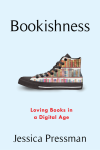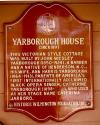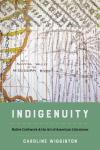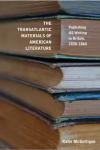AAS draws not only on its traditional resources as a center of bibliographical research and as a matchless repository of early American printed materials, but also on recent intellectual currents that look at the history of books and other printed objects in their full economic, social, and cultural context.
History of the Book

|
Bookishness: Loving Books in a Digital Age | Twenty-first-century culture is obsessed with books. In a time when many voices have joined to predict the death of print, books continue to resurface in new and unexpected ways. From the proliferation of “shelfies” to Jane Austen–themed leggings and from decorative pillows printed with beloved book covers to bookwork sculptures exhibited in prestigious collections, books are everywhere and are not just for reading. Writers have caught up with this trend: many contemporary novels depict books as central characters or fetishize paper and print thematically and formally. |

|
Caterina Jarboro, the 1898 Wilmington Riot, and the Challenges of the Archive | Instances of mass assaults on African American communities in the late nineteenth and early twentieth centuries have received increased attention over the past couple of decades. Among the more notable of these tragic events is the riot that occurred in Wilmington, North Carolina in 1898 that involved not just attacks on African American citizens but also the forceful overthrow of the city government. |

|
Indigenuity: Native Craftwork and the Art of American Literatures | For hundreds of years, American artisanship and American authorship were entangled practices rather than distinct disciplines. Books, like other objects, were multisensory items all North American communities and cultures, including Native and settler colonial ones, regularly made and used. All cultures and communities narrated and documented their histories and imaginations through a variety of media. All created objects for domestic, sacred, curative, and collective purposes. |

|
The Transatlantic Materials of American Literature: Publishing US Writing in Britain, 1830–1860 | During the antebellum period, British publishers increasingly brought out their own authorized and unauthorized editions of American literary works as the popularity of print exploded and literacy rates grew. American fiction, poetry, essays, and autobiographies appeared in a wide variety of material forms and print genres, from prestigious three-volume novels, to illustrated Christmas books, and weekly periodicals. |
| Selling Experience: Amateur Authors and Pamphlet Publication in the Nineteenth-Century US | ||
| History's Imprint: The Colonial Book and the Writing of American History, 1790-1855 | ||
| Writing Home: Female Authorship and Print Culture in America, 1820-00 | ||
| Communication and Information Dispersal in the California Gold Rush | ||
| The Transformation of Authorship in Early America | ||
| Transatlantic Currents, 1820-1860, for The Oxford History of Popular Print Culture |